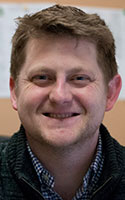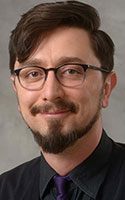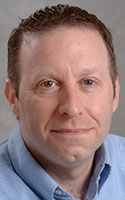So what do local journalists, historians and archivists think will be remembered of the coronavirus pandemic?
By Tim Nekritz
nekritz@gmail.com
“Just like any historical event, there will be many and conflicting interpretations of the pandemic, why and how it happened and [how it] was handled.”

While we look forward to the pandemic being a distant memory and might want to forget its low points, it’s still important to tell the story of this pivotal point in history to future generations.
Businesses struggled. Communities struggled. People of all ages struggled. Families struggled. From those struggles can come strength — and many stories.
But think about how you learned history: It was likely top-down, so you heard about presidents, generals and inventors, but less so about the day-to-day lives of everyday people. The history of the pandemic shouldn’t follow this trend. Just chronicling what presidents and politicians and pharmaceutical company CEOs did would sell short what each of us have lived since spring 2020.
Journalists create what historians call “the first draft of history,” as publications — including this one you’re reading — record the most accessible and reputable documents future generations can read to discover what happened during this momentous time.
For Seth Wallace, editor of The Palladium-Times, that’s why it’s important to be as accurate and inclusive as possible in covering the day-to-day developments of the COVID-19 era.
“I was acutely aware, from the very beginning, of the gravity of the situation and tried to treat it with the seriousness that it deserved,” Wallace said.
In retrospect, Wallace found it interesting how the newspaper’s own phrasing evolved, starting with “COVID-19, caused by the novel coronavirus SARS CoV-2” to headlines like “Viral vax clinic.”
“This gives a little insight to how we, as journalists, were struggling with the pandemic as well: suddenly we all had to become experts on virology and transmission and health care policy and state agencies,” Wallace said. “Any first draft is going to have errors and while we certainly tried to minimize them, I’m sure if you look back through our earliest stories you’ll find information presented as fact which now, with the benefit of a year of studying this virus, are probably incorrect or at least incomplete.”
With so much misinformation throughout the pandemic, but especially in the beginning, “it was really important to always source and cite really diligently where we were getting our facts,” Wallace said.
Future generations looking back at The Palladium-Times will see that “COVID blew everything else off the front page for like, six months,” Wallace said. “I knew what was happening around us and tried to document and catalog it really clearly because I knew it would last for a while. We have a ton of photos of the first drive-through testing clinic at Oswego Hospital, events the city and state put on, and more stories than I can count.”
Future historians take notes

For future historians, the present provides a perfect lesson and opportunity to gain experience.
“The pandemic has provided us, historians, with an excellent teaching moment,” said Murat Yasar of SUNY Oswego’s history department. “We always explain to our students that their personal or other records could be primary sources for future historians. However, most of us do not think and act like that.”
Since the end of World War II, much of the world has lived a relatively peaceful time, where most big events are regional and with less global impact, he noted.
As a result, whole generations “have difficulty connecting themselves to history due to this peaceful period we have lived in since WWII,” Yasar noted. “The pandemic and the global challenge it created have changed their understanding of history. The pandemic showed our students that they were indeed living in and experiencing a major historical event in their lifetime.”
Given the scope of the pandemic, students were either directly affected or knew those affected by the disease — as well as the stress on mental health that adjusting to new realities inside and outside their classes caused.
“They now appreciate the fact that their experience can indeed be used by historians to understand this part of the 21st century,” Yasar said. “I have noticed that writing diaries, blogging and social media presence among my students have increased. I believe it will be a trend in the forthcoming years.”
But recording the events of the pandemic, and providing perspective, is something everybody should consider practicing, he said.
“Write everything, especially from your own perspective and on your own individual experience!” Yasar suggested. “We are lucky to live in the period of the fourth industrial revolution where we can keep every piece of writing stored on computers and clouds, without worrying too much about preserving them. Social media platforms have also helped in this process.”
‘Living history’
Oswego County Historian Justin White, also a board member and volunteer of the Oswego County Historical Society/Richardson Bates House Museum, said it showed everybody is “living history.”
But while local historians encouraged the public to document and share contemporary experiences, feedback and participation was negligible — but likely for understandable reasons.
“We learned that most people were in survival mode at that time and trying to adjust to everyday new changes, regulations and responsibilities to make regular life work,” White said. “This did not give the freedom to focus on submitting information or ideas suggested or ready to do so. While it may happen at some point in time, it may take time for people to consider oral histories or writing their recollections.”
Zachary Vickery, an archivist librarian for SUNY Oswego’s Penfield Library, actively encouraged the campus and community to engage in documentation and preservation.
“Two of the main functions of any archive is to provide long-term preservation of its contents and provide access to users,” Vickery explained. “The sooner these ‘current history’ materials are identified, organized and described by professionals, the higher probability there is to meet these main functions of preservation and access. In other words, the sooner we get the stuff, the quicker and more often people can discover, study and learn from what’s there.”
Vickery and Laura Harris, Penfield’s distance and open education librarian, set up a repository for SUNY Oswego faculty, staff, students, alumni and the community to contribute journals or creative works related to the pandemic.
“I don’t think we had an idea of how long the pandemic would last, but we realized everyone would be staying home for a while,” Vickery said. “I think we wanted to create an outlet for people to share what they wanted to share and participate in an event we all knew had historical implications.”
Knowing that SUNY Oswego, like any large organization, would communicate a large amount of information electronically meant “as the person tasked with maintaining the college archives, I wanted to capture as much official communication as I could so that future researchers could see how the first week, the first month, the first semester unfolded,” Vickery said.
Like White, Vickery said he did not see a large outpouring of documentation from those invited. “However, I remind myself that donations of COVID-19 related material will come when people are ready to donate,” he said.
In terms of what businesses and individuals should conserve, “I say try to document as much as possible, but do it consistently,” Vickery said.
“Take digital photographs of storefronts and public spaces one day each month,” he suggested. “Save your (clean) masks and signs you may have printed or put up. Take screenshots of websites and social media accounts you manage, before the information becomes lost. Find a way to include identification of people, places and things in the photographs, videos and audio recordings you create.”
Including these subjects, locations and dates can provide the who, what, when, where and why to provide context.
Vickery also cited the”3-2-1 rule,” a best practice from the Smithsonian Libraries.
“Ideally there should be three copies of what you want to preserve, stored on two different media, with at least one stored off-site or in the ‘cloud,’” Vickery said. “While we want to take comfort in having a secure place for the things we want to keep, really two or more formats and locations increase long-term preservation of these significant materials.”
How will we remember?
So what do local journalists, historians and archivists think will be remembered?
“Just like any historical event, there will be many and conflicting interpretations of the pandemic, why, and how it happened and was handled,” Yasar noted. “This was not the first pandemic in recent history and clearly won’t be the last.”
The George Santayana advice from 1905, that “those who cannot remember the past are condemned to repeat it,” still applies here, as it showed “we, as humans, did not learn some important lessons from the past pandemics,” Yasar said.
“I am sure that in the next pandemic, people and states will be addressing the same issues as if it is happening for the first time,” Yasar said. “I know it is a little pessimistic, but as a historian, you get to learn that mistakes that can easily be avoided because they happened in the past are often repeated.”
Vickery thinks technology and connectedness will play key roles.
“Archivists have really taken a complex and detailed approach to collecting and documenting the pandemic, from physical and digital records to representative and abstract works to government, community and individual accounts,” Vickery said.
“I also think there’s been a conscious effort by archivists to seek out and encourage representation of everyday life during this pandemic, and to include community members in the process from start to finish,” Vickery added. “From all of this work I believe future generations will have a better opportunity to develop a more representative account of this event than previous world-wide events.”
White noted that, throughout history, anniversaries previously garnered more attention, publications and historical displays.
“Centennials are important and then the importance of preserving the history resurfaces,” White said. “An example is the commemorations of World War I in 2018. There were also commemorations that were a part of that time including the Spanish Flu epidemic that shocked the world at the same time in history. Those that suffered those times, it seemed to take some time before they were ready to talk about the past.”
The Great Depression is another example that caused a lot of suffering and was significant, yet many did not want to remember, he added.
“That seems as though some things never change,” White said. “Luckily there always seems to be a paper trial to help preserve our important past to learn from.”
Wallace knows a lot of people were watching how others helped, or did not, when needed. “I’m always going to remember who acted how in the first few months, because it gave an extremely clear view of who cares about their fellow man and who very aggressively does not,” he said.
“I think it’s really important to tell the full, honest, complete story of what happened,” Wallace said. “We had heroes in our community, that’s certainly a part of it. But our country was super unprepared for this crisis, and ideological differences over — if it was even a real problem — made it worse. I certainly won’t forget that, and it’s unfortunately probably my largest takeaway — more than 550,000 dead Americans is the true takeaway from the past 16 months.”
 Tim Nekritz is director of news and media for SUNY Oswego, where he spearheads telling the stories of the campus community.
Tim Nekritz is director of news and media for SUNY Oswego, where he spearheads telling the stories of the campus community.

